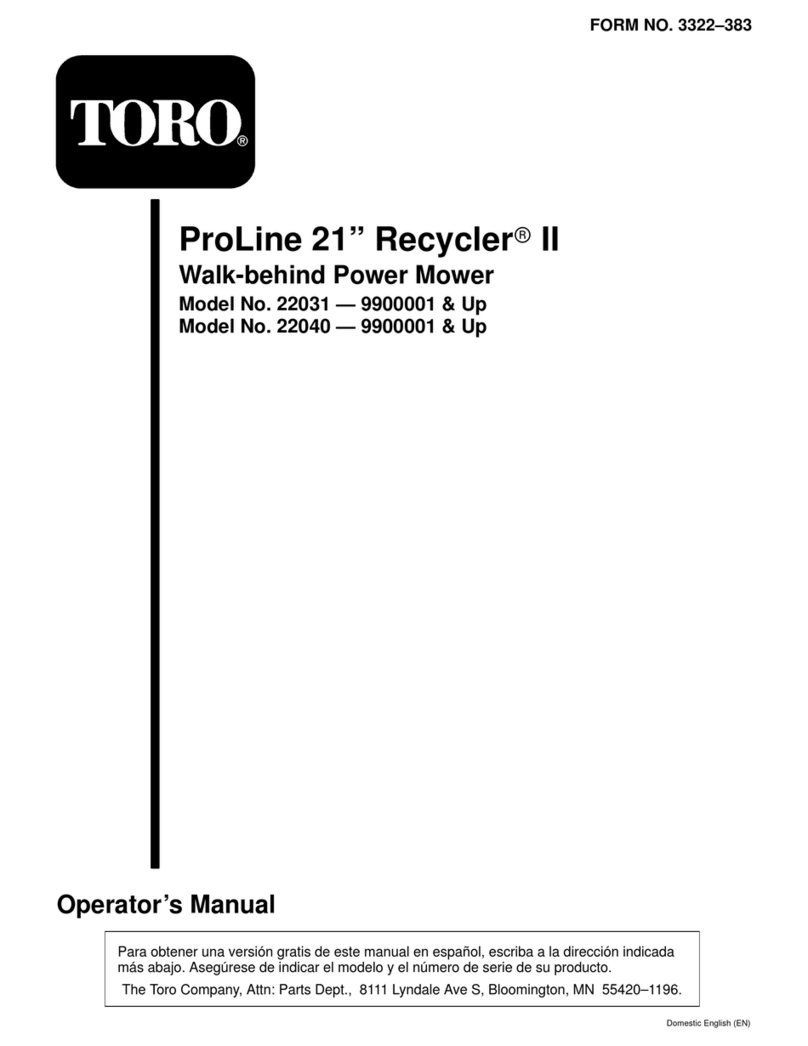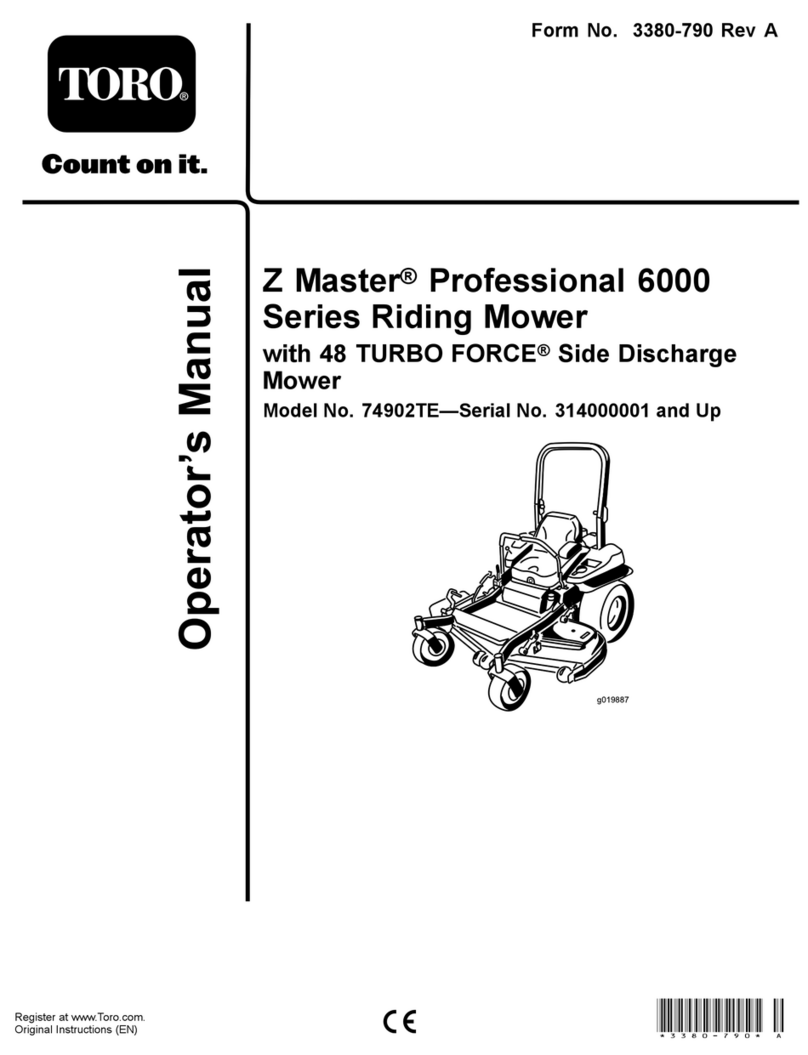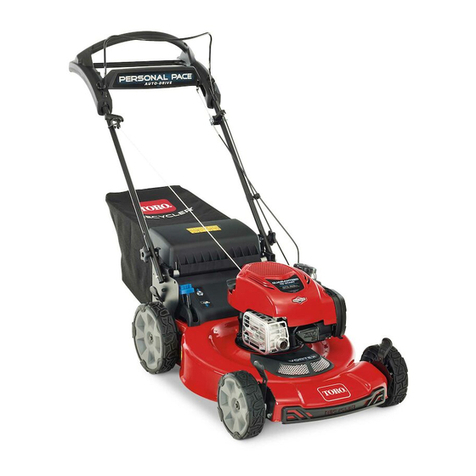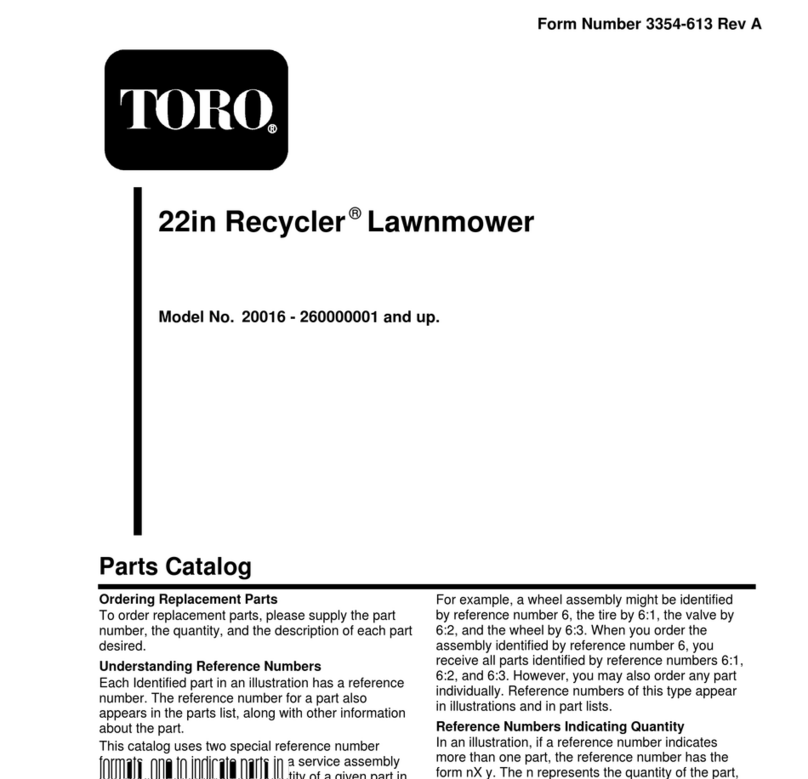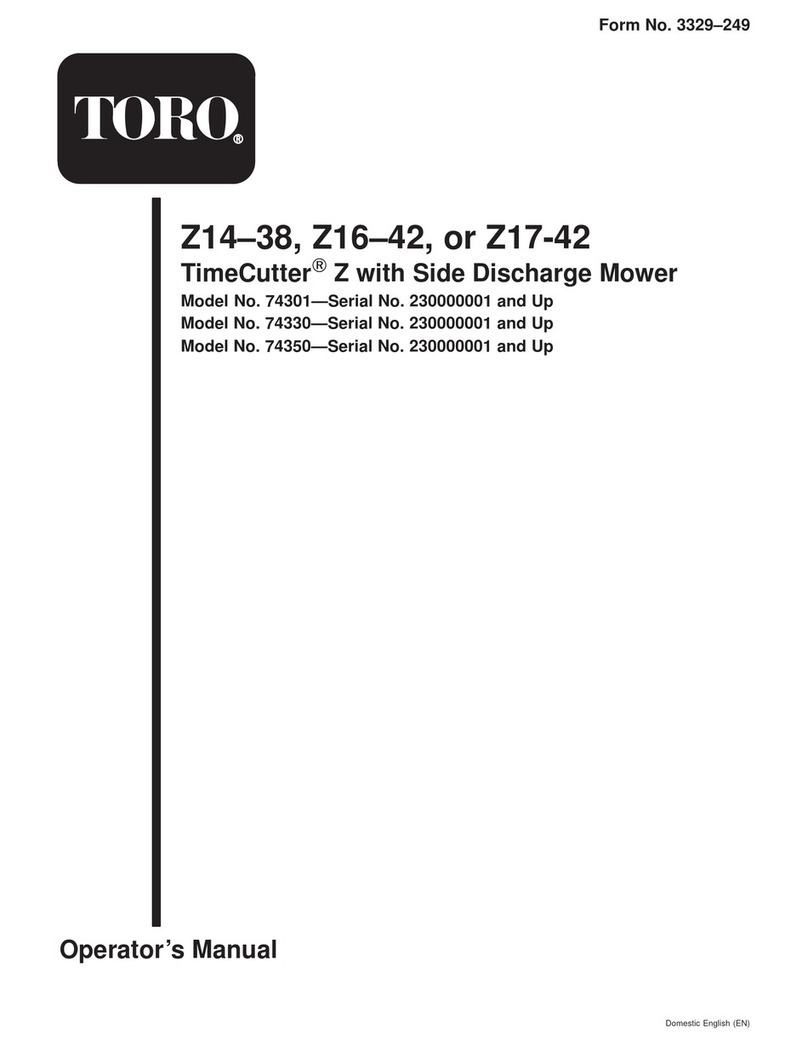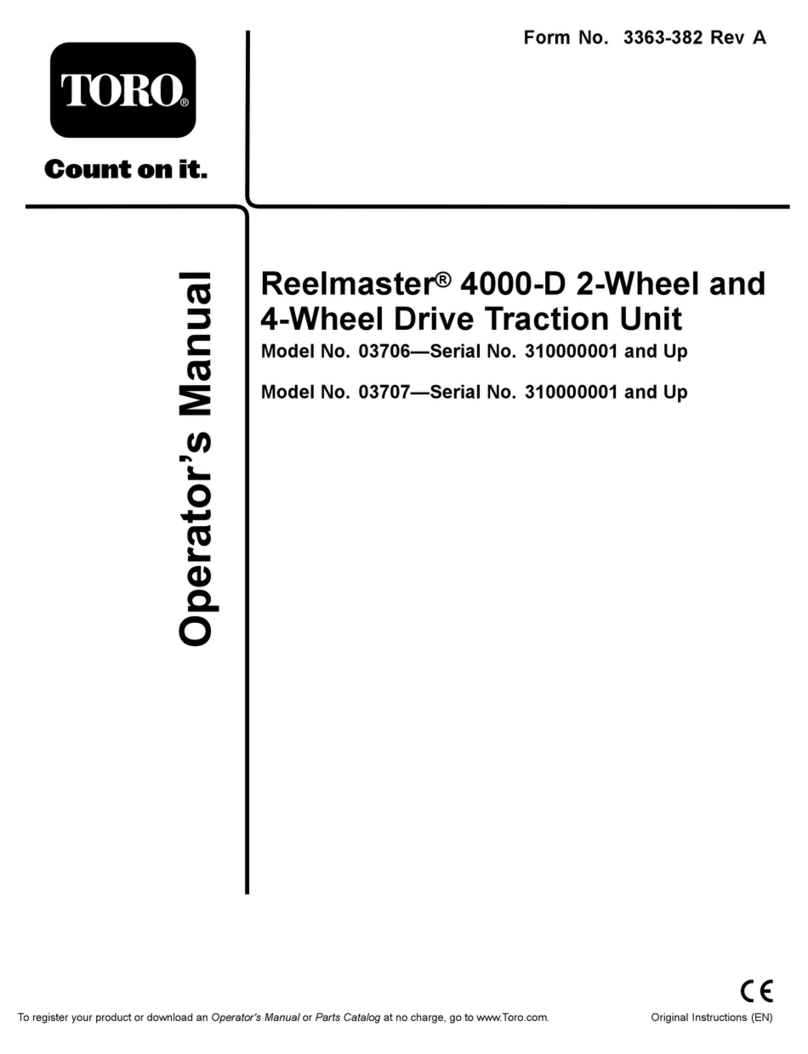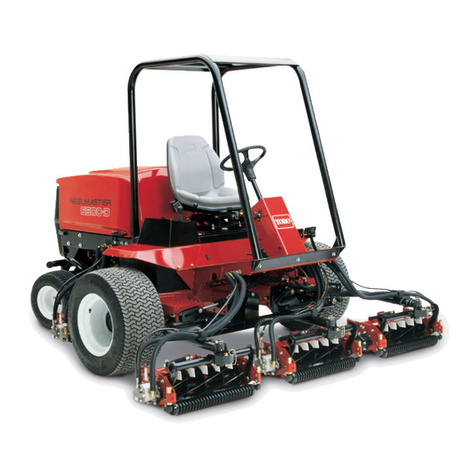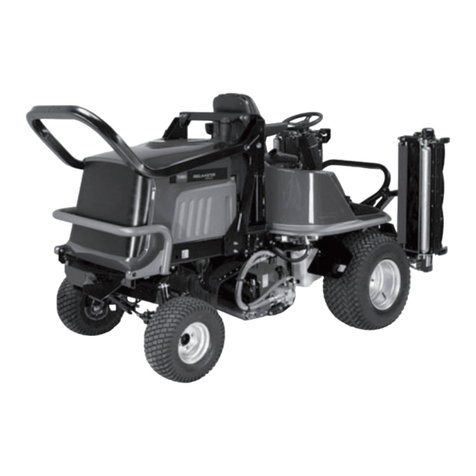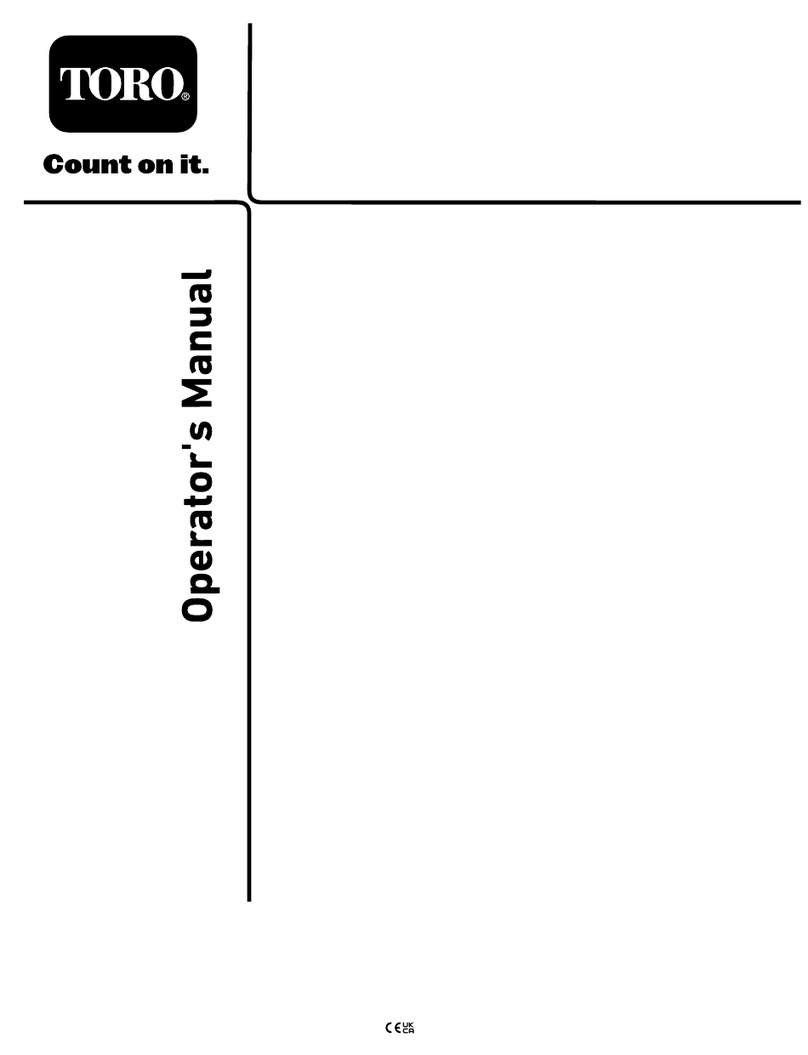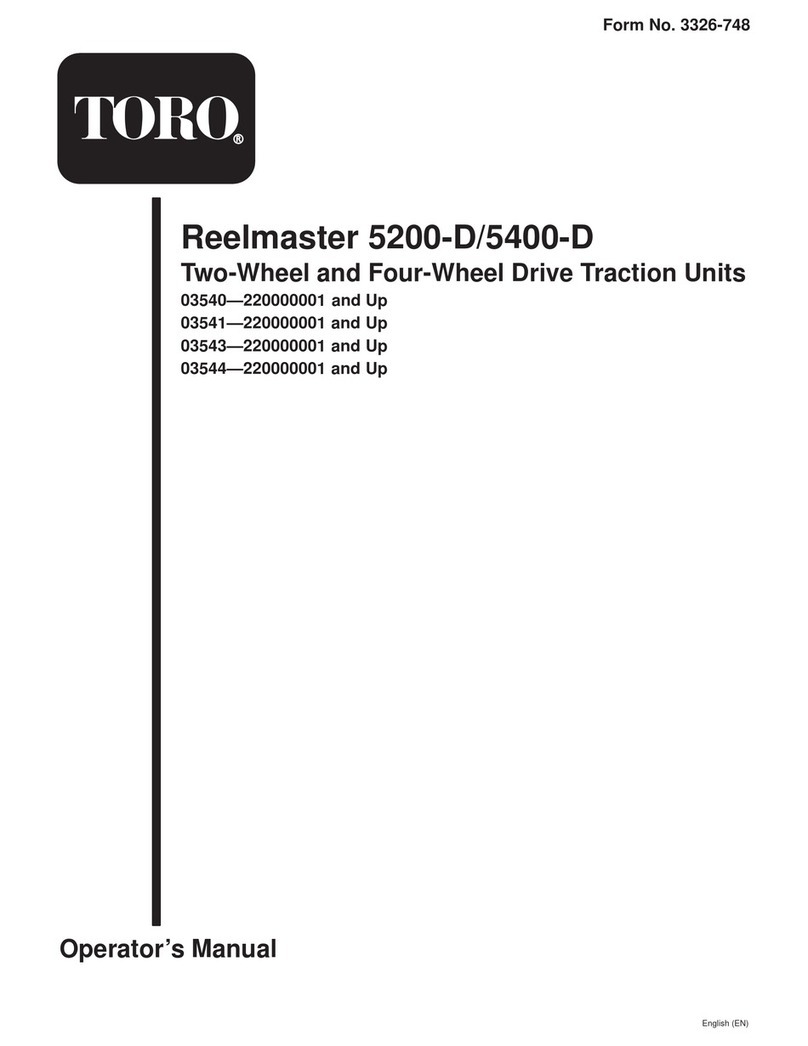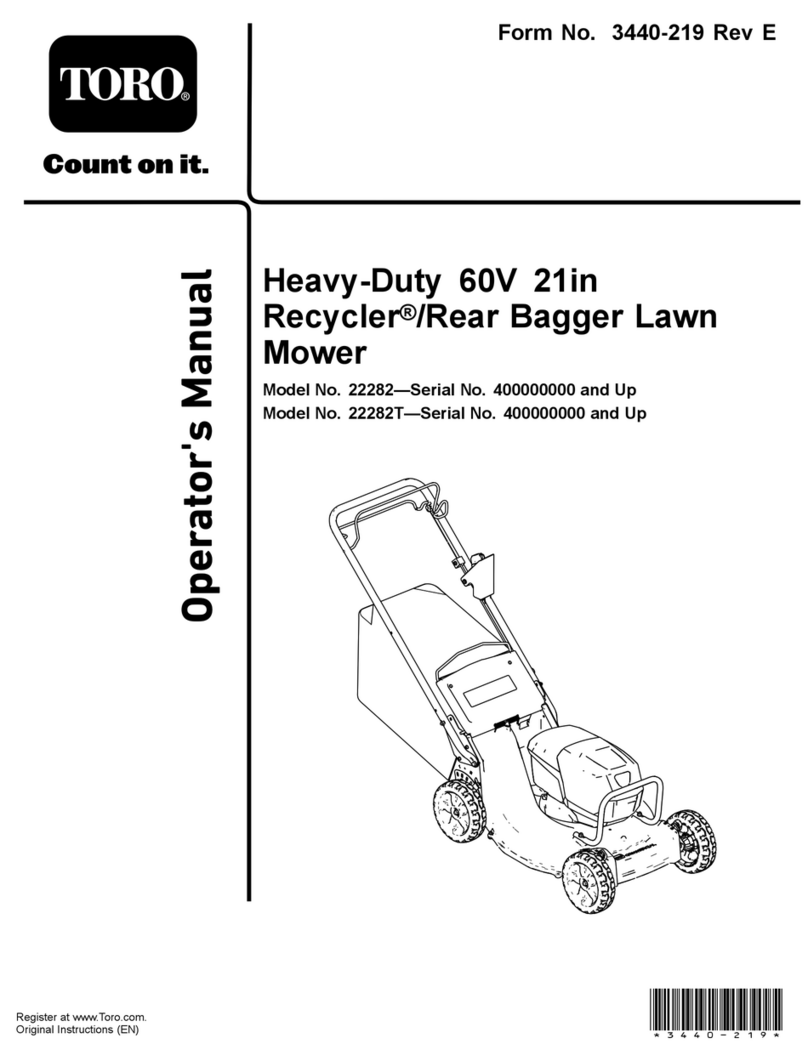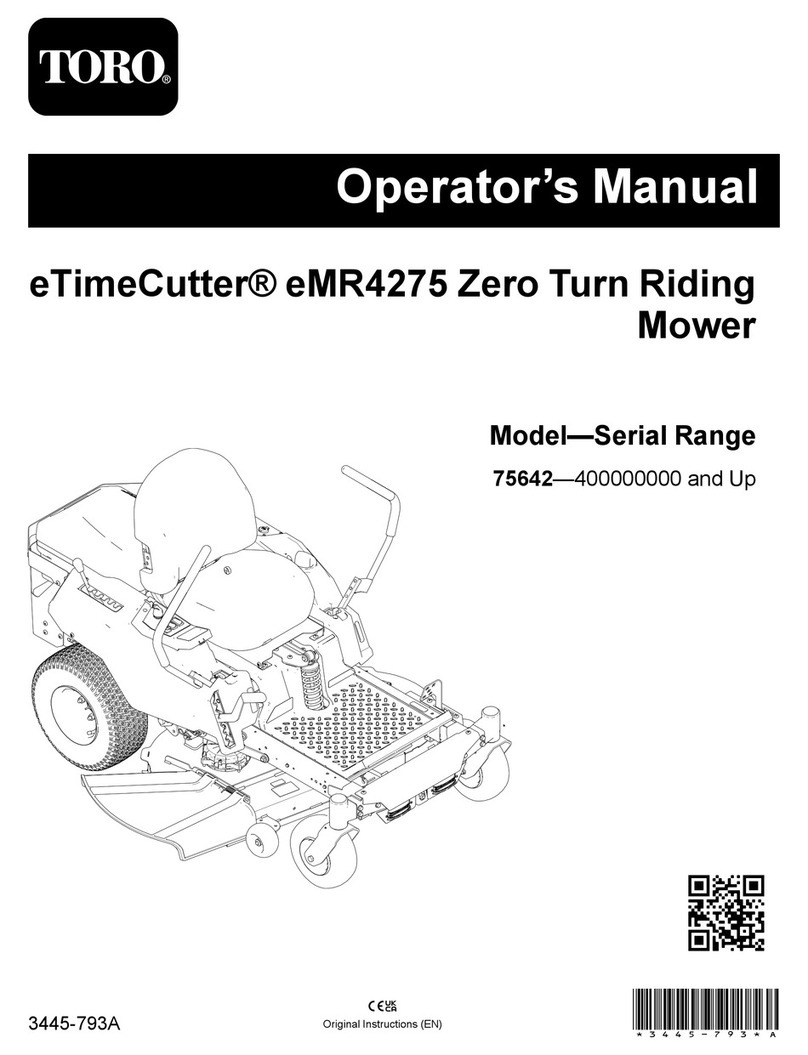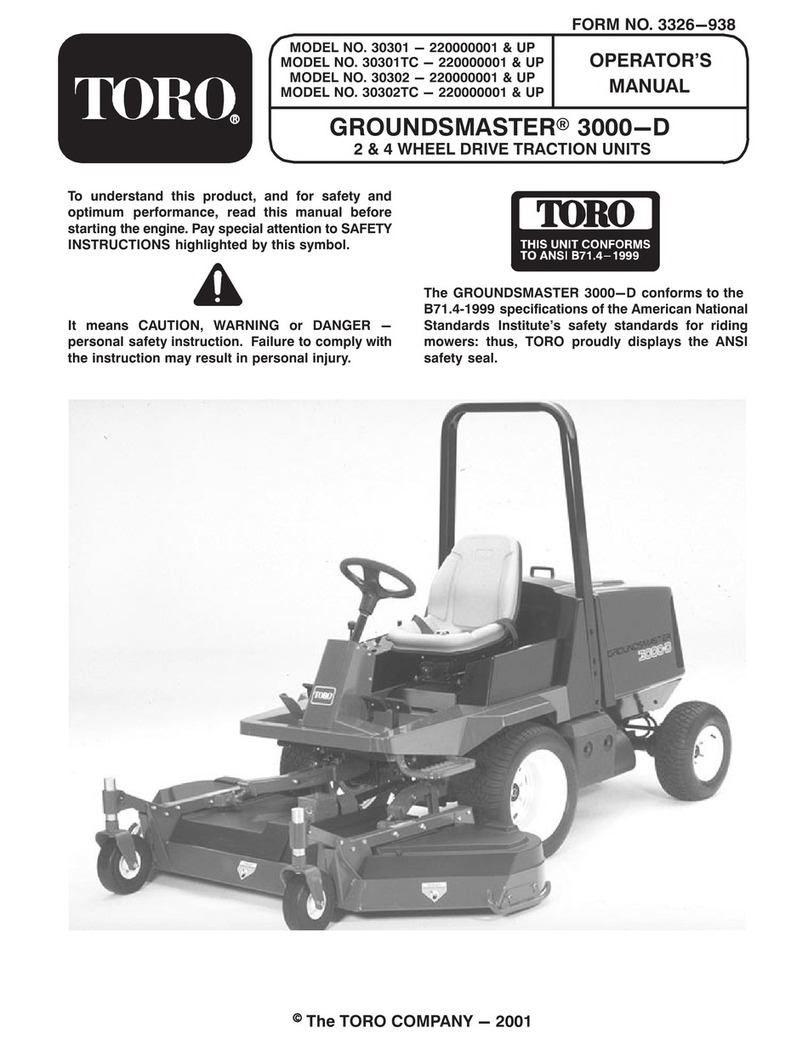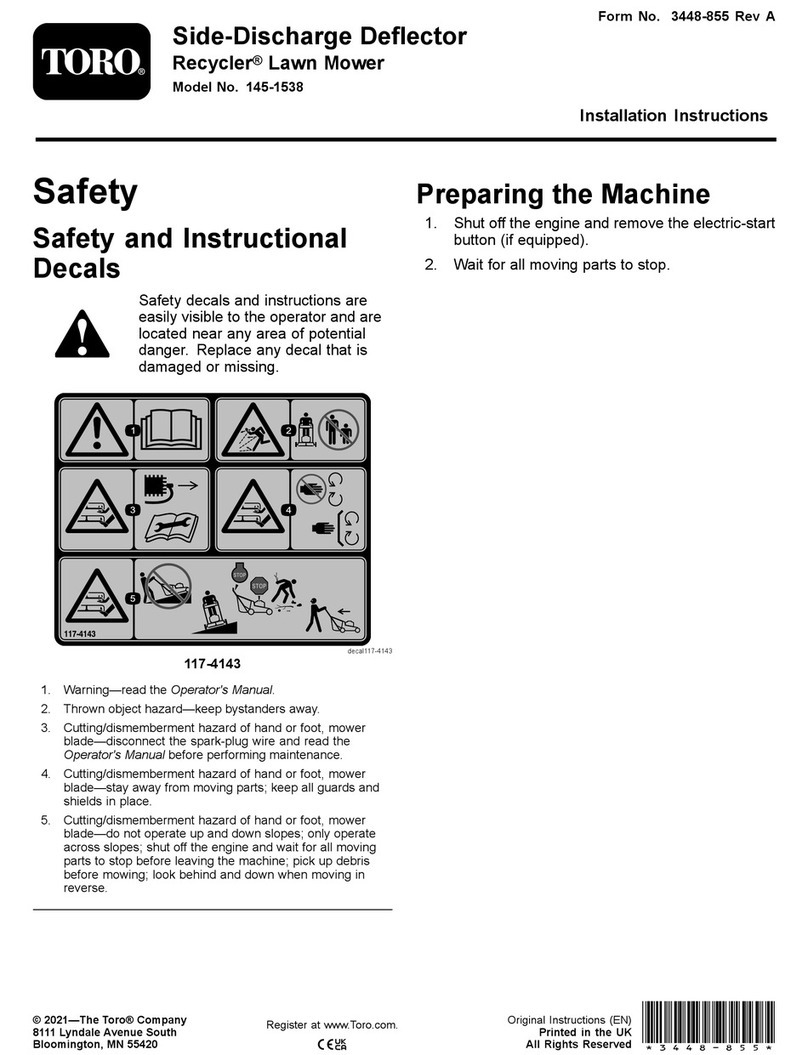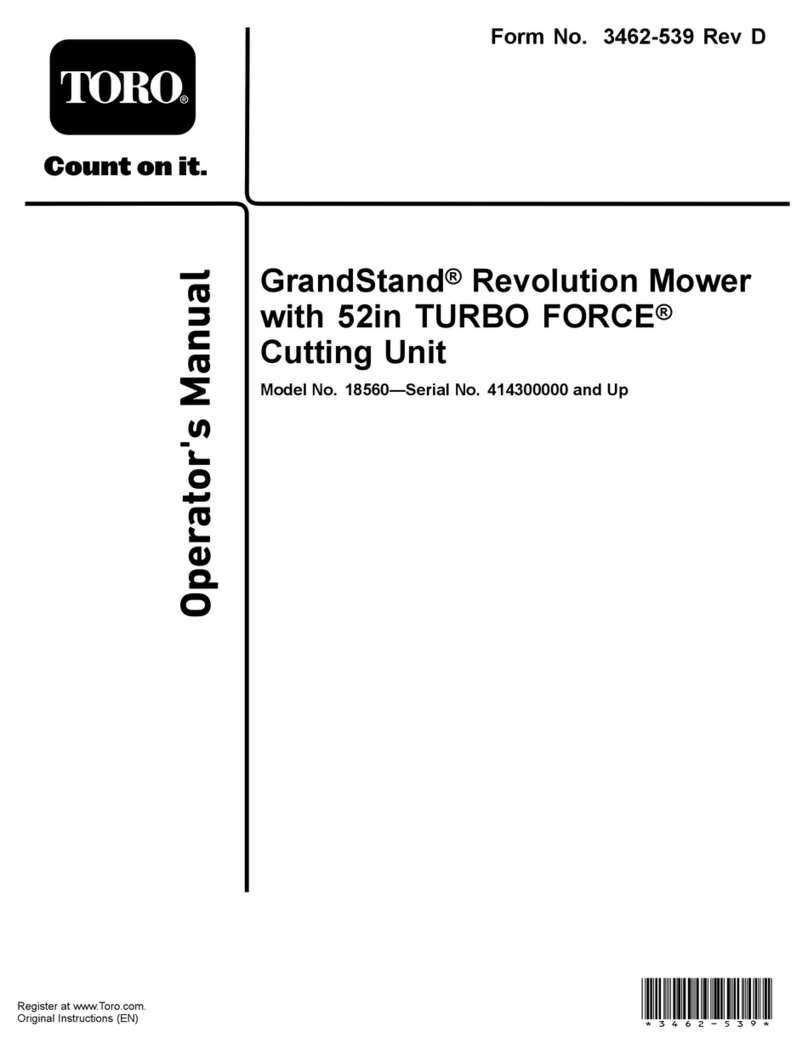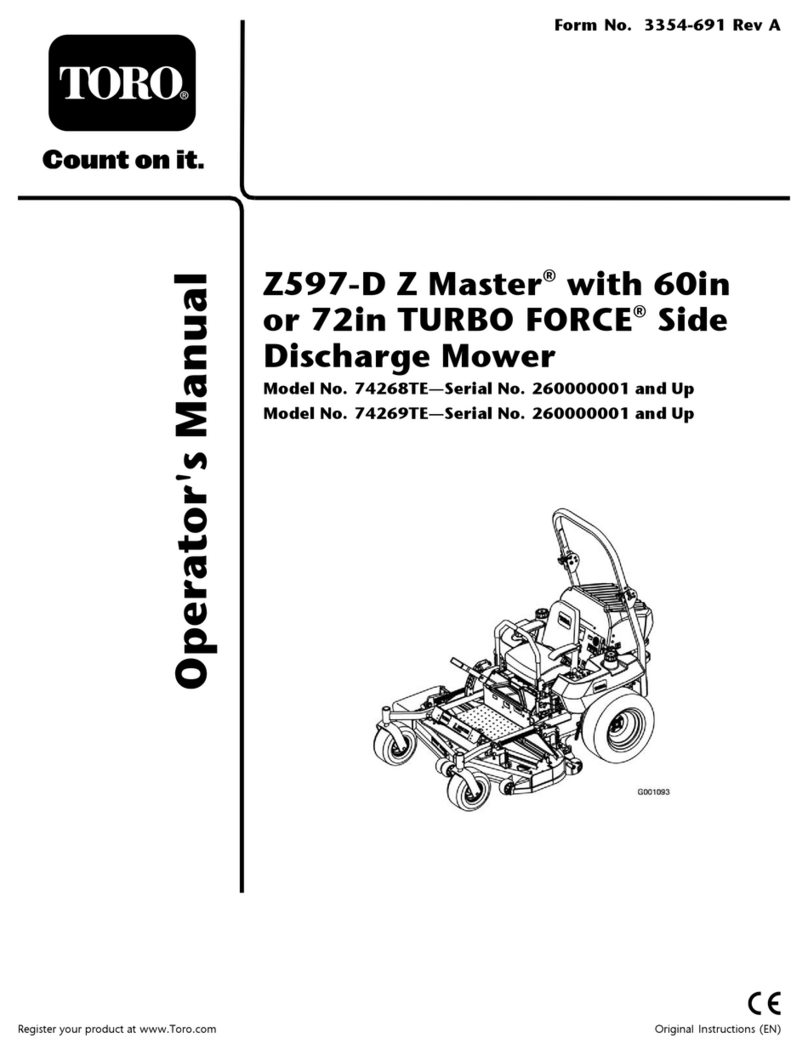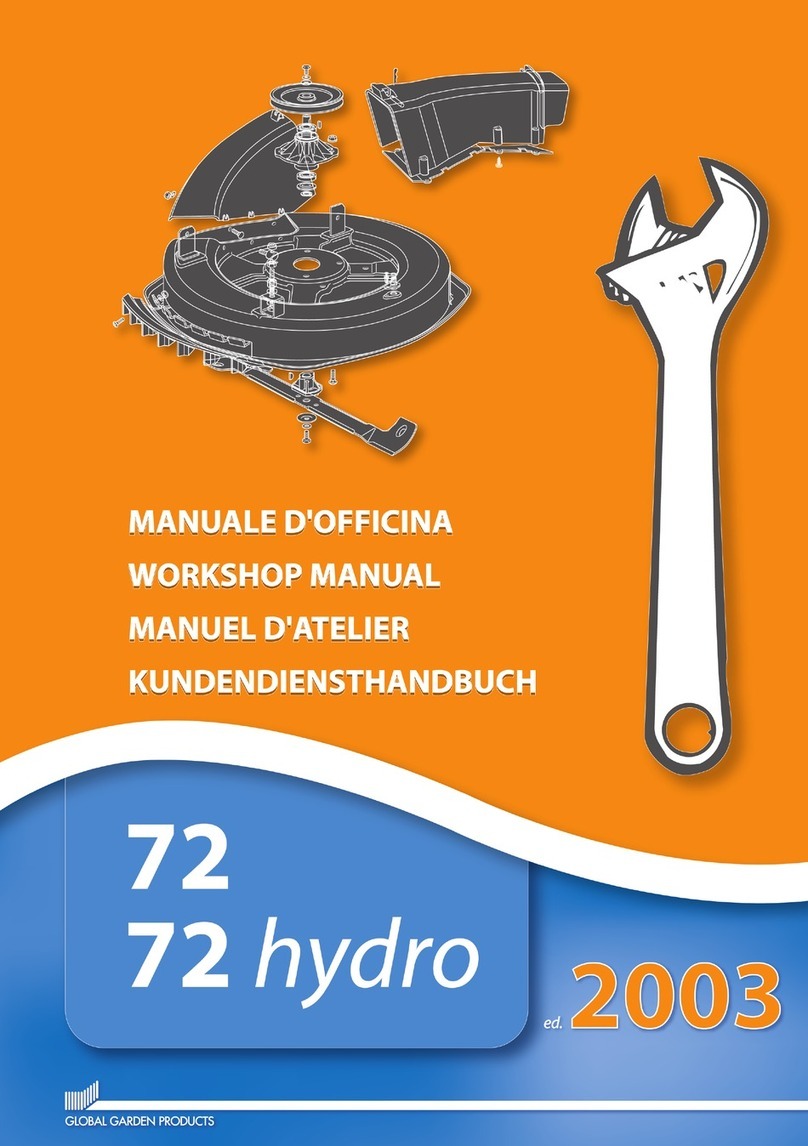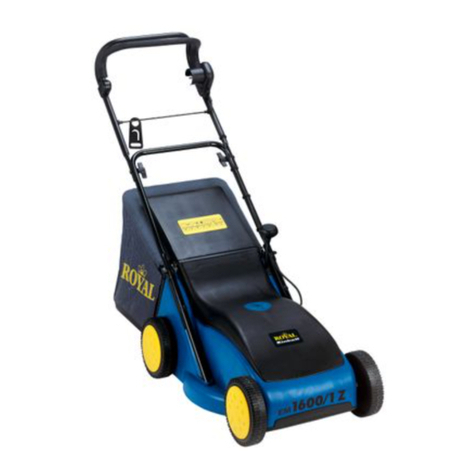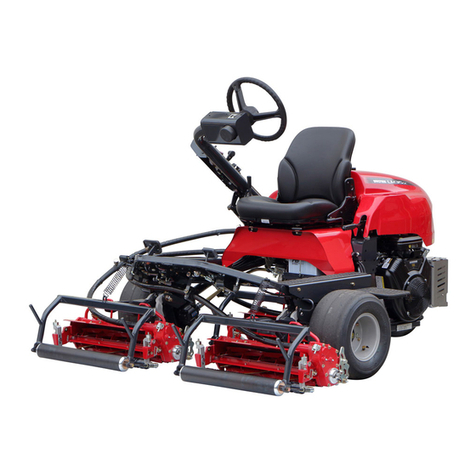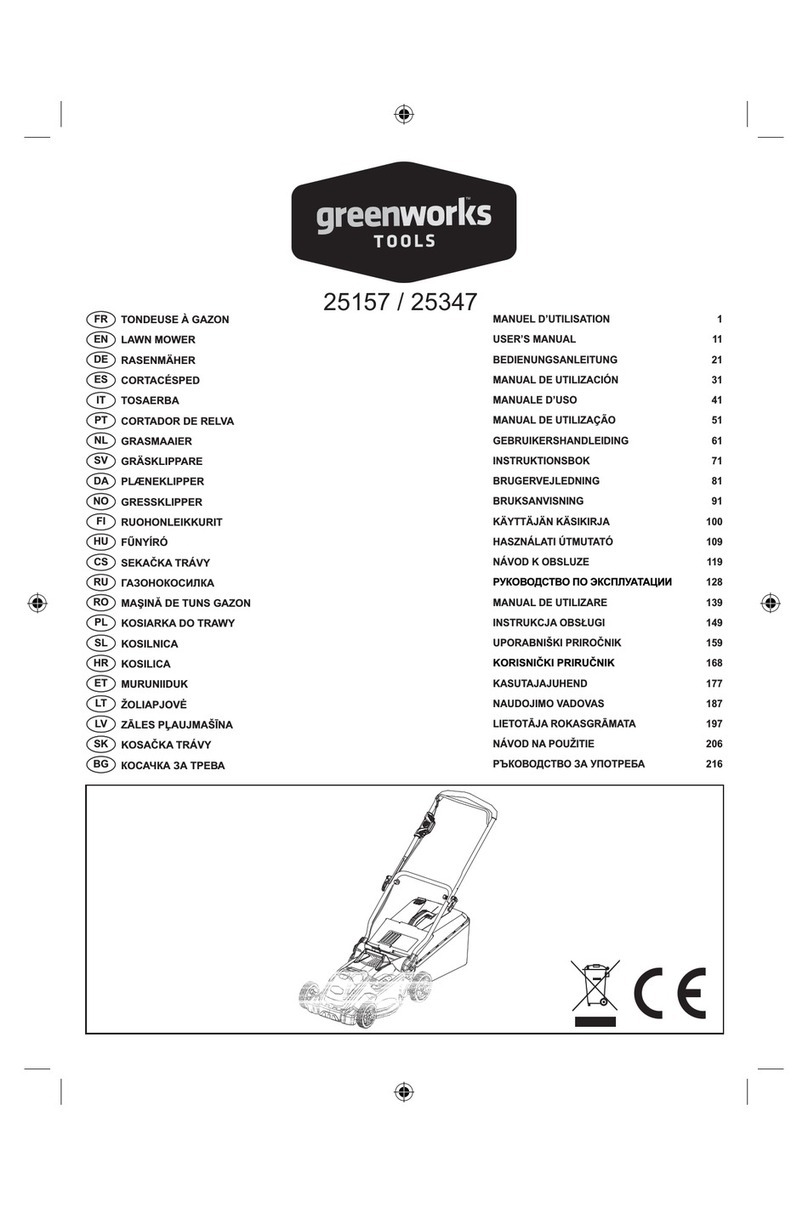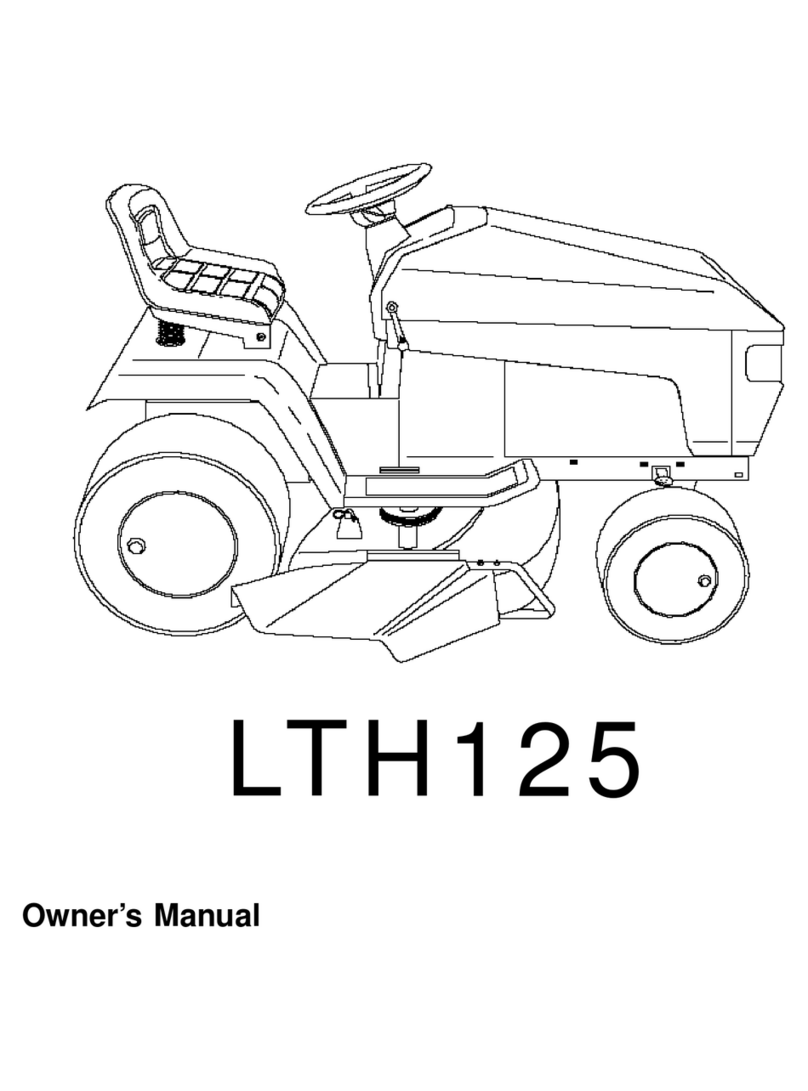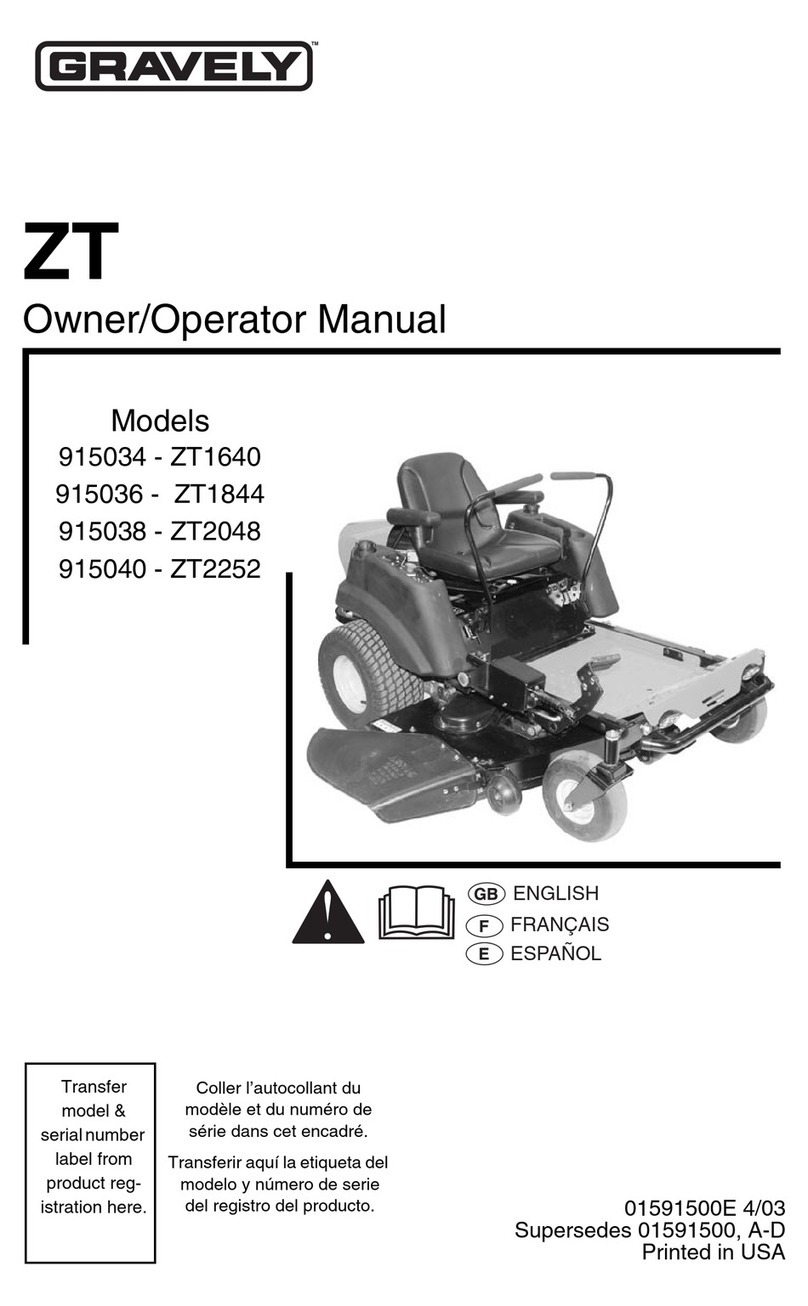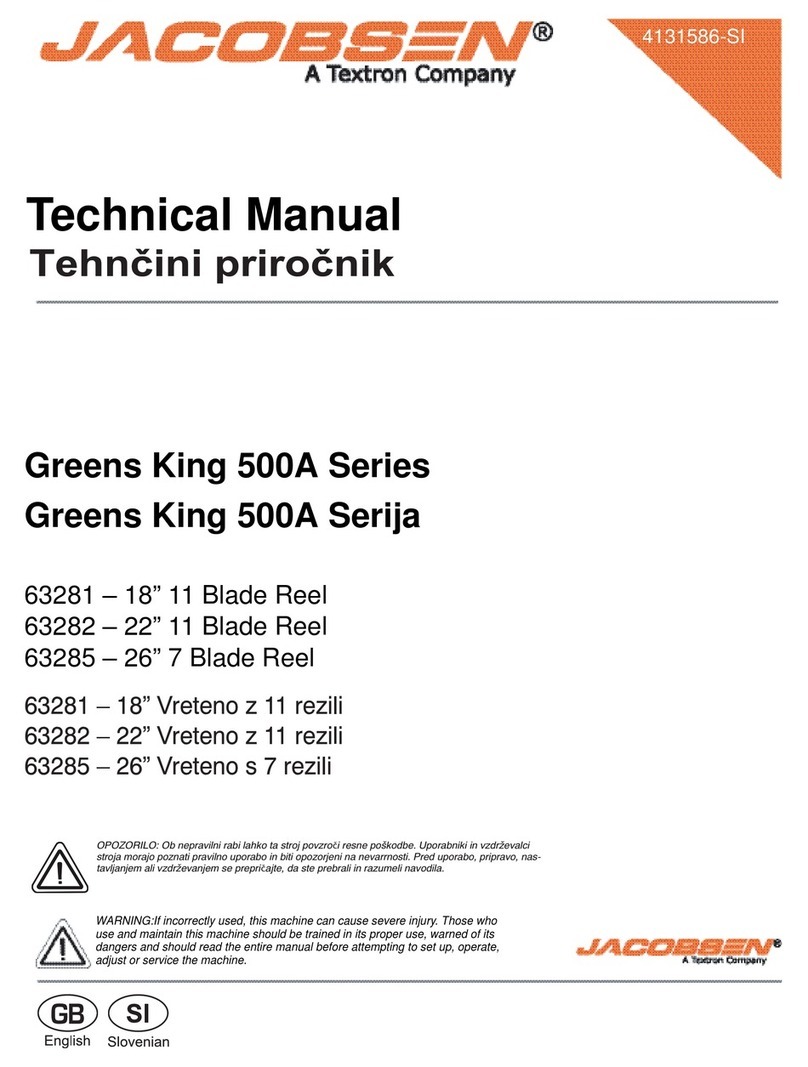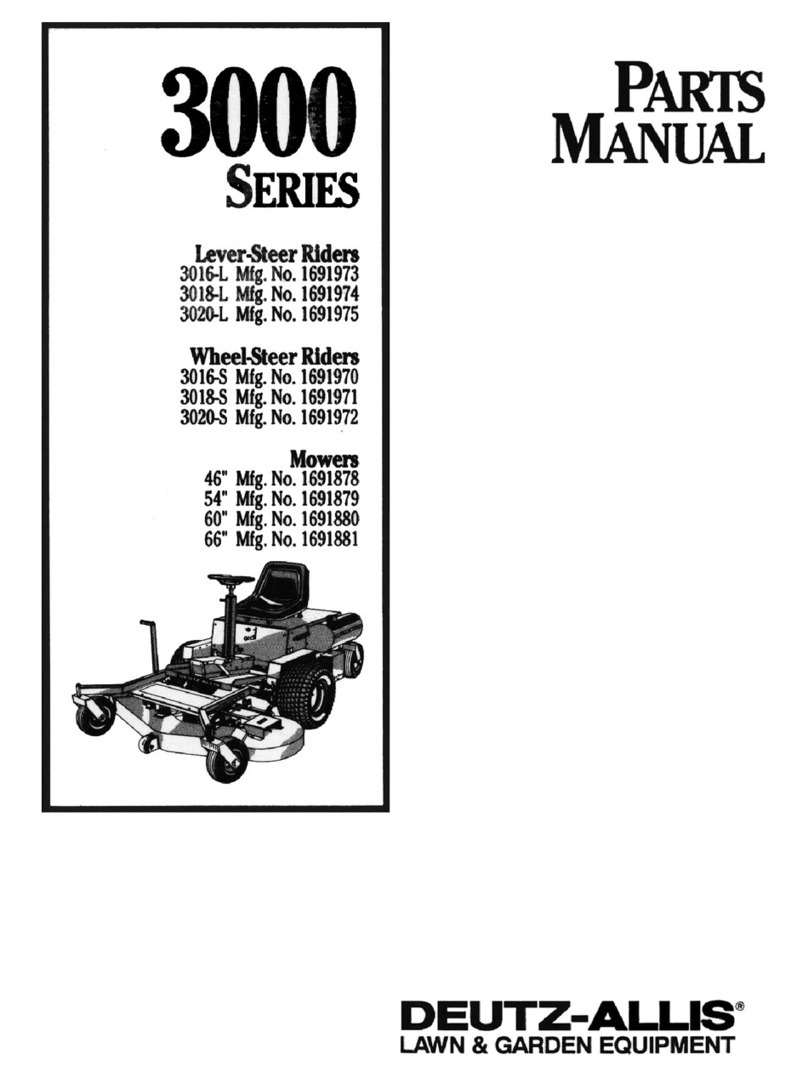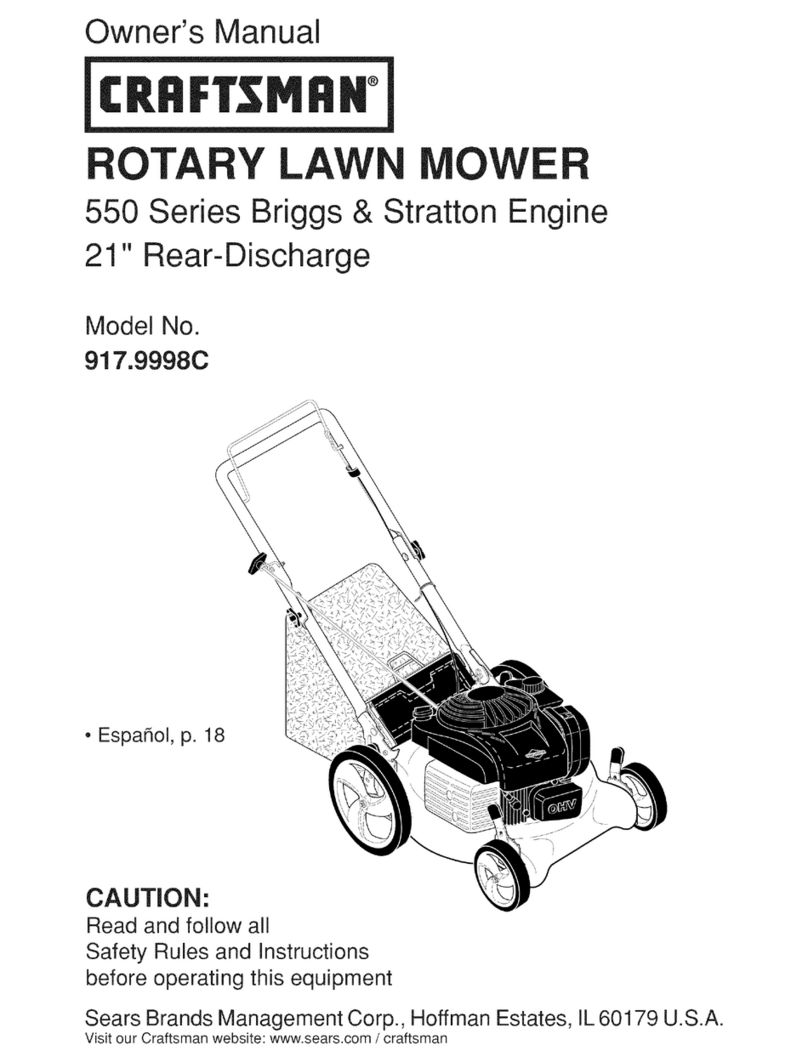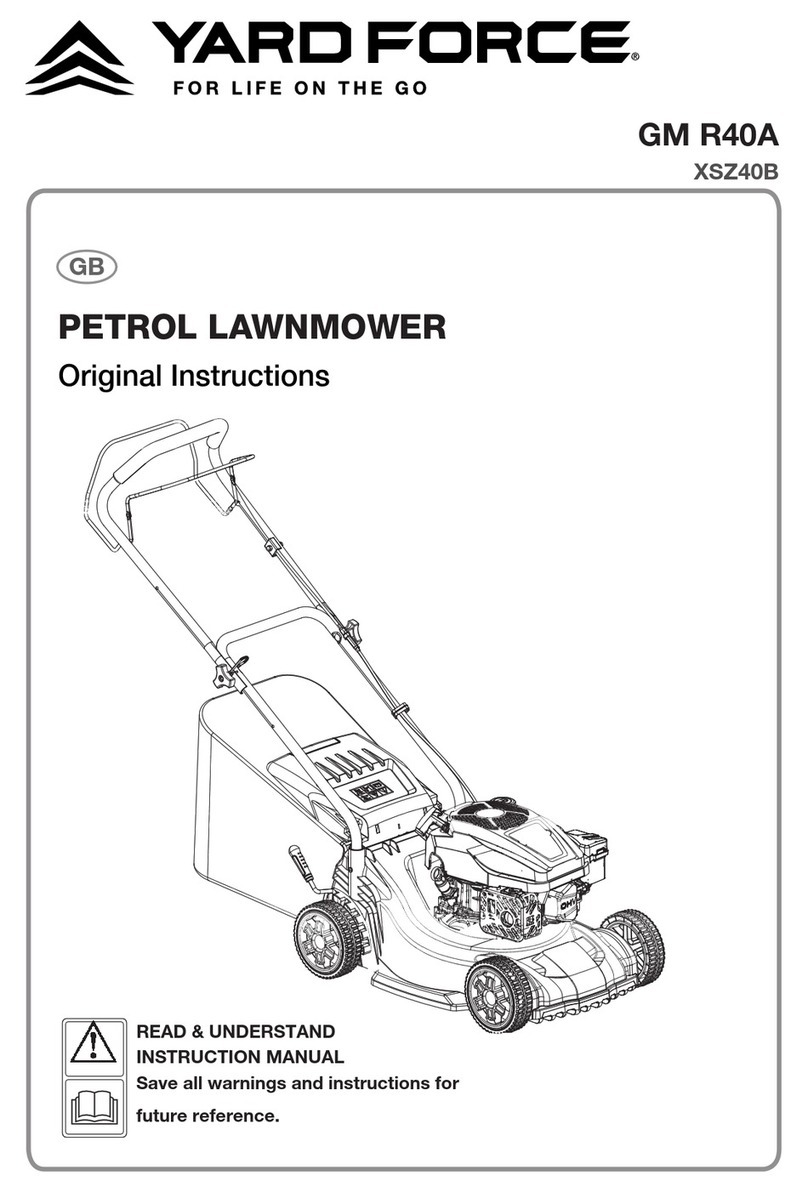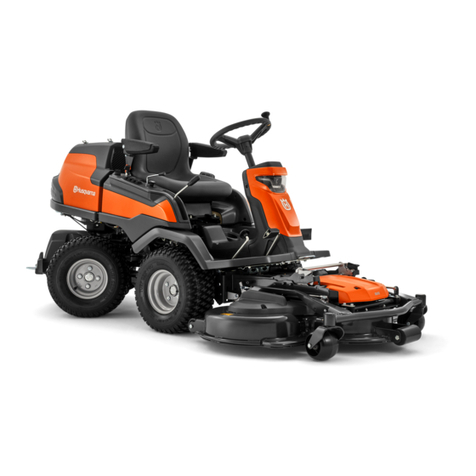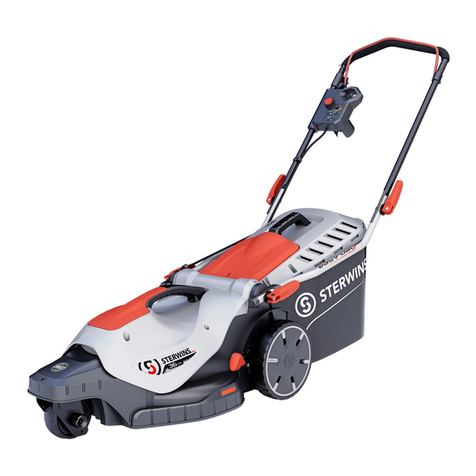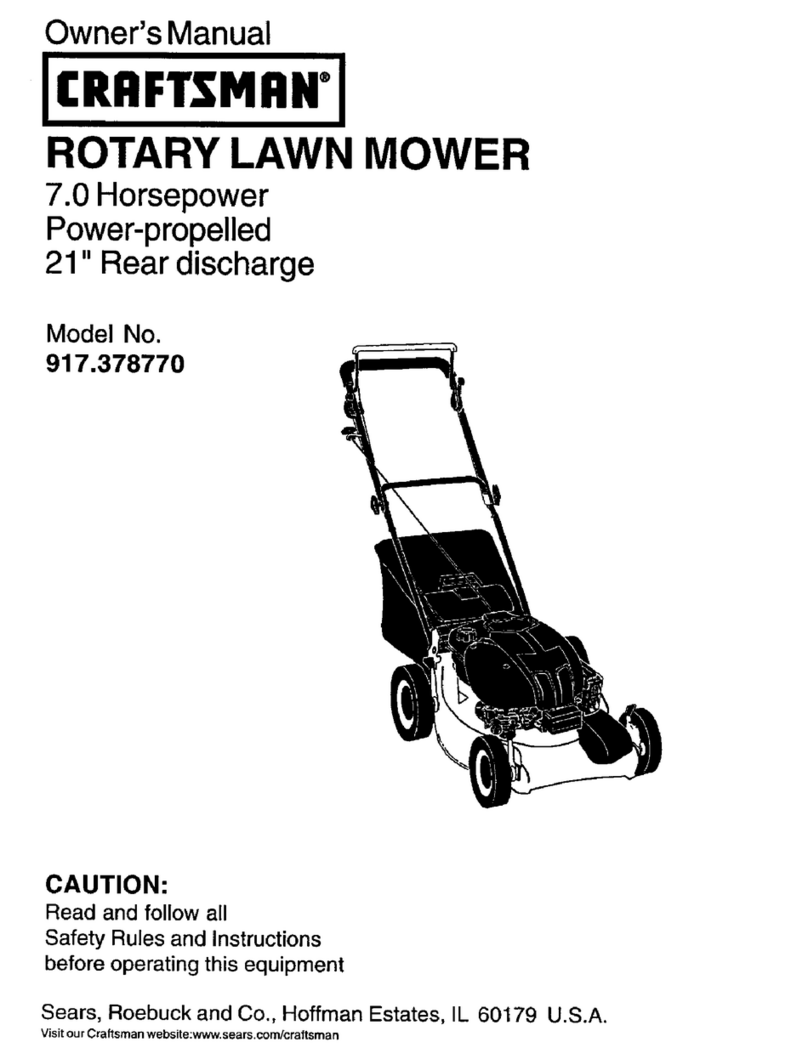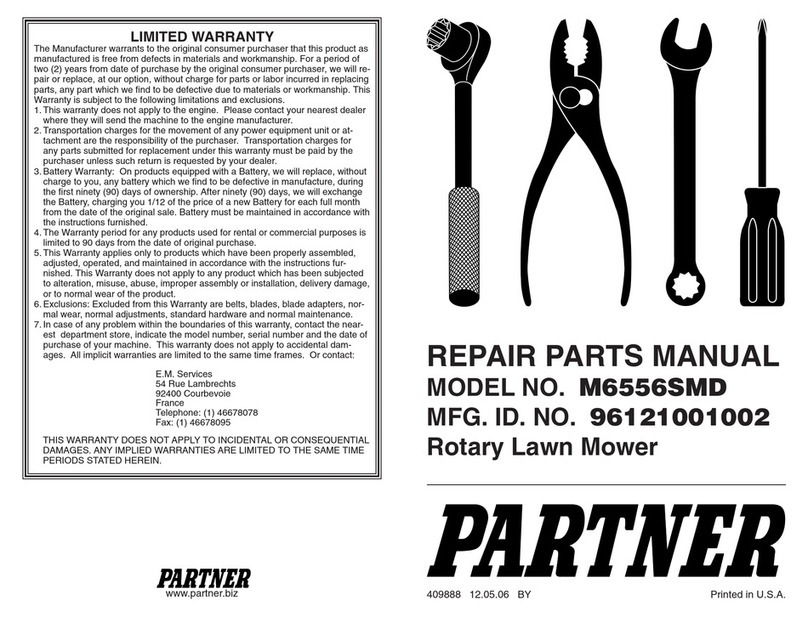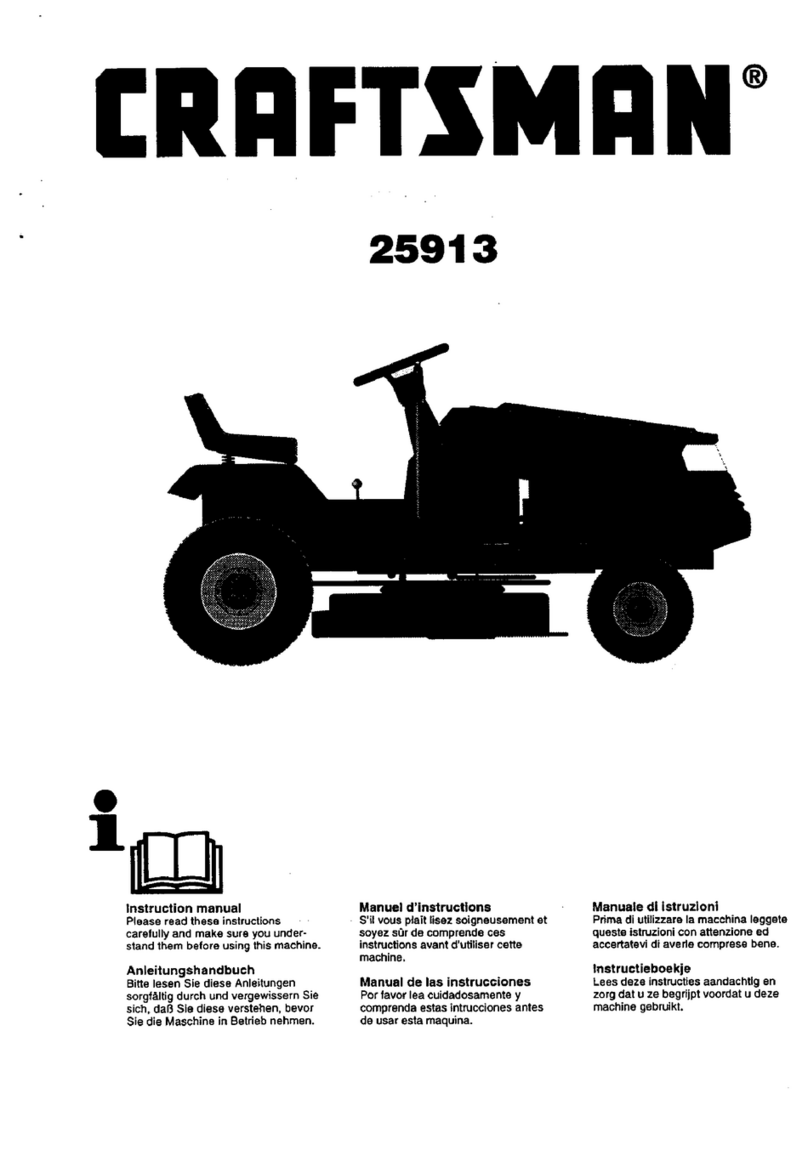
Engine: Mitsubishi three-cylinder, liquid-cooled
diesel. 20.9 kW (28 hp) @ governed maximum rpm
of 3200; 1,318 cc (80.4 cu. in.) displacement
Heavy-duty, 3-stage, remote-mounted air cleaner.
High water temperature shutdown switch.
Cooling System: Radiator capacity is 7.1 l (7.5 qt.)
of 50/50 mixture of ethylene glycol anti-freeze.
Remote mounted .9 l (1 qt.) expansion tank. A two-
speed fan drive controls air flow.
Fuel System: Fuel tank capacity is 37.9 l (10 gal.)
of #2 diesel fuel. 12-volt, electric fuel pump with
replaceable fuel filter. Equipped with a fuel
filter/water separator to capture water in the fuel.
Traction System: Foot pedal controls forward/
reverse ground speed. Ground speed: 0–16.1 kmh
(0–10 m.p.h.) forward and 0–6.4 kmh (0-4 mph)
reverse. Hydrostatic transmission mounted directly
on a 20.9:1 ratio front axle. Axle/reservoir capacity
is 4.7 l (5 qts). Replaceable filter mounted directly
on transmission housing. Model 03531 only:
Mechanical rear axle is coupled to the front axle by a
drive shaft and overrunning clutch.
Cutting Unit Drive System: Hydraulic reel motors
feature quick disconnects to ease removal/installa-
tion on cutting units. Hydraulic fluid reservoir
capacity is 32.2 l (8.5 gal.). System protected by a
filter assembly with service indicator.
Seat: Deluxe high-back seat with adjustable fore
and aft travel, weight and height. Tool box at the left
side of the seat.
Steering System: Power steering with dedicated
power source.
Tires: Two rear tires: 19 x 8.50-8, tubeless, 4-ply rat-
ing. Two front tires: 26 x 12.00-12 tubeless, 4-ply
rating. Recommended tire pressure for the front and
rear tires is 69–103 kPa (10–15 psi).
Brakes: Individual drum-type wheel brakes on the
front traction wheels. Brakes controlled by individ-
ual pedals operated by the left foot. Hydrostatic
braking through traction drive.
Electrical System: Automotive type electrical sys-
tem. 12-volt, maintenance free battery with 530 cold
cranking Amps @ –18°C (0° F) and 85 minute
reserve capacity @ 29° C (85° F). 40-amp alternator
with I.C. regulator/rectifier. Seat switch, reel and
traction interlock switches. An electronic controller
monitors and controls safety and operational func-
tions.
Controls: Foot-operated traction and brake pedals.
Hand-operated throttle, traction speed control lever,
parking brake lock, ignition switch with automatic
preheat cycle, single joy stick control for cutting unit
on/off and lift/lower. Cutting unit backlap switch and
reel speed controls located under the operator seat.
Gauges: Hour meter, speedometer, fuel gauge, tem-
perature gauge. 4 warning lamps: oil pressure, water
temperature, amps and glow plug.
General Specifications (approx.):
Width-of-Cut : 241 cm (95 in.)
Overall Width:
Transport 220 cm (87 in.)
Outside of tires 208 cm (82 in.)
Overall Length:
Without grass baskets: 263 cm (103.5 in.)
With grass baskets: 294 cm (116 in.)
Height:
With Rollover protector: 214 cm (84.5 in.)
Without 142 cm (56 in.)
Recommended Height-of-Cut:
5-Blade Cutting Unit: 1–1.9cm (1/2–3/4 in.)
8-Blade Cutting Unit: 0.4–1.6 cm (1/4–5/8 in.)
Weight: Model 03502 821 kg (2,200 lbs.)*
Model 03504 952 kg (2,550 lbs.)*
Model 03530 868 kg (2,325 lbs.)*
Model 03531 998 kg (2,675 lbs.)*
*With 8-Blade Cutting Units, baskets & full
fluid levels
Optional Equipment
5-Blade Cutting Unit, Model No. 03505
8-Blade Cutting Unit, Model No. 03508
9
Specifications
